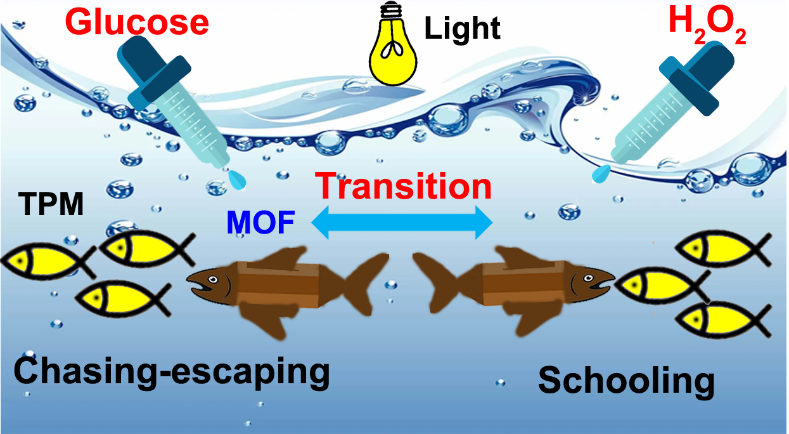A team of scientists led by Prof. Yongxiang Gao from the Institute for Advanced Study at Shenzhen University developed a photoactive and intrinsically fuel sensing metal–organic framework (MOF) motor that can be used for tailoring collective behaviors of active-passive colloids. Their advance was published inSmall(Q1; IF 15.15) , with Dr. Muhammad Ikram and Prof. Yongxiang Gao the first author and the corresponding author, respectively.
Microorganisms display nonequilibrium predator–prey behaviors, such as chasing–escaping and schooling via chemotactic interactions. Even though artificial systems have revealed such biomimetic behaviors, switching between them by control over chemotactic interactions is rare. Here, a spindle-like iron-based metal–organic framework (MOF) colloidal motor which self-propels in glucose and hydrogen peroxide, triggered by UV light is reported. These motors display intrinsic fuel-dependent chemotactic interactions, which are used to achieve transition of the collective dynamics of active-passive colloidal mixtures between chasing–escaping and schooling. The transition is attributed to an alteration in the direction of ionic diffusiophoretic interactions, resulting from a change in the ionic clouds produced. This study offers a new strategy on tuning the communication between active and passive colloids, which holds substantial potentials for fundamental research in active matter and practical applications in cargo delivery, chemical sensing, and particle segregation.
This research was supported by the International Young Scientists program of Natural Science Foundation of China (22150410328), Natural Science Foundation of Guangdong Province (2022A1515011800), and the Science and Technology Innovation Commission of Shenzhen (JCYJ20220531103205012)。
https://onlinelibrary.wiley.com/doi/full/10.1002/smll.202301625



